#Lost but not forgotten
Explore tagged Tumblr posts
Text

quick doodle!
#rottmnt#riseofthetmnt#kikis art#rise of the teenage mutant ninja turtles#illustration#raphael#rottmnt raphael#rottmnt raph#rise raphael#rise raph#michelangelo#rottmnt michelangelo#rottmnt mikey#rise michelangelo#rise mikey#digital illustration#art#sketch#doodle#sunset duo#lost but not forgotten
2K notes
·
View notes
Text
Lost, but Not Forgotten: Trifling Women (1922)











About Trifling Women
Trifling Women was a gothic and lurid tale of a beautiful fortune teller doomed by her own capriciousness with men, couched in a moralistic frame story. Contemporary critics, including those who positively reviewed the film, felt it proper to disregard the frame story. This “fantastic and savage concoction with all the weird fascination of a bad dream”[1] was compared to Edgar Allan Poe’s “The Murders in the Rue Morgue”, Theda Bara vamp classic A Fool There Was (1915, extant), and German expressionist landmark The Cabinet of Dr. Caligari (1920, extant).[2] I’d take these comparisons with a healthy cellar of salt, but we can’t know for sure what ghoulish heights Ingram reached with Trifling Women unless it’s someday recovered!
In 1922, Irish-born filmmaker Rex Ingram was on a roll. He followed up his epic blockbusters The Four Horsemen of the Apocalypse (1921, extant) and The Prisoner of Zenda (1922, extant) with the macabre spectacle Trifling Women. The film was a self-produced remake of Ingram’s earlier Black Orchids (1917, presumed lost).
Ingram was developing a reputation for igniting the careers of his up-and-coming stars. In 1921, with Four Horsemen and The Conquering Power (1921, extant), he launched Rudolph Valentino’s career into the Hollywood stratosphere. With Trifling Women, Ingram turned Ramon Novarro (then going by Ramon Samaniegos[3]) and Barbara La Marr, who had both had important supporting roles in Zenda,into bona-fide headliners.
Trifling Women met disparate critical reception upon release—some called it a triumph on par with Horsemen and Zenda, one bluntly stated, “We are sorry Mr. Ingram has done this thing.”[4] Harriette Underhill, film critic for the New York Tribune listed Trifling Women as one of the 10 best films made to date in Screenland, November 1923. Regardless of the lack of critical consensus, Trifling Women was a box-office success. This is made even more impressive considering its theatrical run coincided with Douglas Fairbanks’ Robin Hood (1922, extant), Marion Davies in When Knighthood Was in Flower (1922, extant), John Gilbert in The Count of Monte Cristo (1922, extant), and the sleeper Thomas Meighan hit Manslaughter (1922, extant).
Rex Ingram, like previously profiled George Fitzmaurice, was a successful and well-regarded filmmaker in the US in the silent era. But, like Fitzmaurice, his legacy is relatively unhyped; at least in part because of the survival rate of his filmography. Of the 28 feature films Ingram worked on, 15 are lost or incomplete, and only 8 have been made accessible on home video or online. Public screenings of Ingram’s more inaccessible surviving films are unfortunately rare.
——— ——— ———
[1] Picture-Play Magazine, March 1923
[2] Photoplay, December 1922
[3] Novarro’s real name was Samaniego, but he went by Samaniegos professionally at the time. This film was his first credit with the name Novarro.
[4] Motion Picture Magazine, January 1923

Novarro, Ingram, and La Marr Behind the Scenes of Trifling Women from Exhibitors Herald, 4 November 1922. Original caption: “It’s remarkable how hardened these directors become. This little duelling scene between Rex Ingram, Metro director, and Ramon Navarro was staged only as a recreational stunt, however, during the filming of ‘Trifling Women,’ Ingram’s latest for Metro. Barbara La Marr appears mildly interested in the affair.”
Alternate Titles: Black Orchids (Production Title)
Direction: Rex Ingram, Curt Rayfield (assistant)
Scenario: Rex Ingram
Original Story: Rex Ingram
Production Manager: Starrett Ford
Camera: John F. Seitz
Art Director: Joseph Calder (Implied in “Chit Chat and Chatter About Southland Film Folks” by Harry Burns in Camera!, 22 July 1922)
Studio: Rex Ingram Productions (Production) & Metro (Distribution)
Performers: Barbara La Marr, Lewis Stone, Ramon Novarro, Pomeroy Cannon, John George, Edward Connelly, Hughie Mack, Joe Martin
Premiere: 2 October 1922, The Astor Theatre, New York, NY
Status: presumed entirely lost
Length: 8 reels, 9,000 feet
Synopsis (synthesized from contemporary plot summaries): BELOW the JUMP!
☕Appreciate my work? Buy me a coffee! ☕
Frame story: France, modern day—1922, that is. Jacqueline de Severac (Barbara La Marr) is young, beautiful, and flirtatious. She carelessly trifles with the affections of Henri (Ramon Novarro), her true-hearted admirer. Henri proposes to Jacqueline in the lush surroundings of her family’s garden. With her desire for a freewheeling and fashionable life attended by many suitors, Jacqueline considers jilting Henri. Her father, Leon de Severac (Pomeroy Cannon), a renowned novelist, senses danger ahead for his daughter. Knowing her temperament, rather than directly warn Jacqueline about how toying with men’s feelings can lead to tragedy, de Severac opts to read his newest manuscript, “Black Orchids,” to his wayward daughter.
The Story of Black Orchids: Paris, France, at the start of the Great War. Zareda (La Marr) is a Parisian crystal gazer— a professional psychic. Her ardent clientele seek either a glimpse into their future or into the nature of her heart. The latter pay more handsomely than the former.

Hatim-Tai, Zareda, and Ivan in Zareda’s apartment
One of Zareda’s many admirers is the naive and dashing Ivan de Maupin (Novarro). Unfortunately, Ivan’s doddering, elderly father, the Baron de Maupin (Edward Connelly), is also trying to woo Zareda. This, of course, is highly amusing for the trifling fortune teller, who is known for her feud-inducing beauty.

Zareda and Ivan in Zareda’s apartment as printed in Exhibitors Herald, 18 November 1922
Zareda humours the Baron as he lavishes her with expensive gifts, which she treats carelessly—even adorning her orangutan assistant Hatim-Tai (Joe Martin) with pearls.
“There’s no fool like an old fool”
The old Baron is so keen to rid himself of competition for Zareda’s attention that he arranges for his son to go off to war. The possibility arises that Ivan and Zareda might impulsively tie the knot before Ivan marches to the front, so the Baron launches another scheme to occupy Zareda’s time.
The Baron convinces a visiting family friend, the Marquis Ferroni (Lewis Stone), to feign illness as an excuse to call on Zareda for assistance. This scheme was too hastily hatched however. Ferroni is a millionaire who lives in a magnificent old castle and is in mourning for his recently deceased wife. The Baron assumed that Ferroni’s bereavement would preclude him from being a rival for Zareda’s attentions. But alas, to Ferroni, the beautiful Zareda resembles his late wife. Attraction ensues.

Zareda chooses Ferroni over the Baron as seen in Exhibitor’s Trade Review, 21 October 1922
Ivan, about to depart for Flanders, takes a photo of Zareda with him, despite sensing her inconstancy. As Ivan marches off to war, Ferroni and Zareda are on a date in a fashionable neighborhood of Paris.

Banquet scene still from from the Exhibitors’ Press Bookfor Trifling Women
Faced with his new rival, the Baron plans a banquet in Zareda’s honor. The banquet is a set-up to poison Ferroni’s wine. An innkeeper (Hughie Mack) catches the Baron in the act, but the Baron pays him off. Despite the pay off, the innkeeper immediately gets word to Zareda, and she counterplots with her human assistant, Achmet (John George), and Hatim-Tai. At the party, Hatim-Tai switches the wine glasses and the Baron himself is poisoned. The revelers think he has simply passed out from drink at the dinner table and they continue partying. Hatim-Tai drinks a toast to the not-so-dear-departed Baron.

Ferroni and Zareda in a still printed in Photoplay. December 1922
Now unencumbered, Zareda marries Ferroni, thoroughly enchanted by his wealth.
Four years later, Ivan returns to Paris an officer, having received no word from Zareda in all that time. Ivan seeks her out and finds her now a Marquise, living the high life in a chateau. In the castle gardens, Zareda tearfully apologizes to Ivan and promises that she can “dispose” of her husband.

Still of Novarro as Ivan after returning from war printed in Photoplay, January 1923
Zareda wants to enjoy both Ferroni’s wealth and Ivan’s love, so, she contrives a duel between her husband and lover by suggesting that Ivan insulted her honor. Zareda knows that Ivan is one of the best swordsmen in France. She tears her own dress and runs to Ferroni sobbing—without fully enlightening Ivan of the scheme.
At the duel, Ferroni is skewered; mortally wounded by Ivan. Zareda, taking Ferroni for dead, falls into Ivan’s arms and they walk off together. Ferroni now knows it was all a plot. The doctor tells Ferroni he will die from his wound, but Ferroni proclaims that he will live long enough to spite the young lovers.

Ferroni is run through, Motion Picture Magazine, January 1923
Ferroni arranges his own burial and his grave is filled with rocks. Ivan and Zareda row a boat across a lake to the grave of Ferroni, to lay a wreath of black orchids. Unbeknownst to the couple, Ferroni watches them and collects the orchids after they depart.
At the reading of Ferroni’s will, Zareda inherits a looming property ominously called the Sorcerer’s Tower. However, a strange condition in the will demands that at sundown on the day of Ferroni’s funeral, Zareda must visit the tower. Zareda plans to meet Ivan there at the appointed time.
Zareda consults with her crystal ball about this turn of events and receives the message:
“You will meet your destiny at the Sorcerer’s Tower.”
She reads this prediction rosily and is pleased.
On that gloomy evening, Zareda arrives first—or so she thinks. She begins primping herself in a full-length mirror. In the reflection, shockingly, she sees the livid face of Ferroni, shrouded in black. Terrified, Zareda backs away from the mirror, into the very-much-alive Ferroni’s arms. Outside, the sound of horses’ hooves presage the arrival of Ivan. Zareda pleads with Ferroni, but she is in a state of horrified near-somnambulance. Zareda is led to the dungeon, all moulding straw and cobwebs. Ferroni throws her in, and locks the door behind him.

Ferroni and Ivan have their final showdown, from the Exhibitors’ Press Book for Trifling Women
Ivan searches for Zareda and hears her crying out. Ferroni lies in wait for Ivan and they struggle. Ivan is shot and Ferroni throws his lifeless body into the dungeon with Zareda. Ferroni places upon the locked door of the dungeon the withered wreath of black orchids that Zareda had previously left on his own tomb. Ferroni drops dead, his vendetta fulfilled.

Zareda and Ivan from Exhibitors Herald, 25 November 1922
Frame story: de Severac finishes reading his story. Jacqueline has taken the lesson to heart and agrees to marry Henri and move forward with sincerity and faithfulness
——— ——— ———
Transcribed Sources & Annotations over on the WMM Blog!






#lost media#lost film#1920s#1922#rex ingram#barbara la marr#ramon novarro#film history#history#film#american film#cinema#classic cinema#filmblr#classic movies#classic film#silent cinema#silent movies#silent era#silent film#classic hollywood#old hollywood#hollywood#lost but not forgotten
19 notes
·
View notes
Text
The voices are not mine or my fathers, but it fit so well. Happy Memorial Day everyone. To those we got back and those we lost along way. You are never forgotten
#lost but not forgotten#memorial day#parent loss#veterans#veterans daughter#i miss you#rest in peace#rest in paradise#never forget#never forgotten#not all who wander are lost#complex ptsd#ptsd
3 notes
·
View notes
Text

Lord Enghearst
I hunted down that pale bloodsucker yesterday. He stands around disguised as Mayong Mistmoore himself. Only to mock anyone coming close:
Lord Enghearst shouts, 'I am one of his eldest children, but only an idiot would think that I am Mayong Mistmoore. It amuses me to allow him to believe that I am the patriarch, though. Ha ha! And now... I shall now amuse myself with you!'
Lord Enghearst can be found in the 19th Anniversary mission Lost but Not Forgotten which required a 12 people mini-raid in 2018.
4 notes
·
View notes
Photo

KODABOLU BROS. // Unused Art
This is old as heck and never saw the light of day. It’s always fun to mimic styles. Especially video game stuff! The show went in a different direction, but this one is still fun.
#dtafm#design#art direction#illustration#vector#video game#podcast#podcasts#podcast art#kondabolu#earwolf#unused#morgue file#lost but not forgotten#pixel
1 note
·
View note
Text

surprise it's yuri!!!in 2024
#my art#yuri on ice#yuri!!! on ice#yoi#fanart#katsuki yuuri#victor nikiforov#victuuri#yoi fanart#this was the secret 4th thing that lost the poll jdsfgsdfjj#id been thinking about doing a tribute since getting that one ask but i didn't anticipate how Into it i would get once i started#the way i flew through this piece .. just over 1 day??? insane#yuri is /that/ ingrained in my muscle memory#I was looking at refs and ?? id forgotten how wild this show was#we just got all of that?? a pole dance a proposal a kiss a pair skate....and it was ALL canon? incredible#AND YEAH UNPROMPTED HISTORY MAKER PLAYS IN MY YT MIX#dean fujioka jumpscare#also looking back at my old yoi pieces was so wild. that ws really 8 years ago huh.#little bit of an ego boost looking at how far ive come#but also im just grateful idk sry 2 b sappy on main#i hope 16 year old me is happy that i did this bc im happy i did this#edit bc i forgot a bunch of white outline i am a fraud
11K notes
·
View notes
Text








i can turn you into poetry but i cannot make you love me.
(creds will be added in a hot sec! my bad y'all ;p)
#☆ my web weaves#web weaves#web weaving#webweave#webweaves#web weave#webweaving#poetry#franz kafka#everything everywhere all at once#henry dumas#dog poetry#dog motif#canine motif#canine poetry#<- briefly#on abandonment#on dying alone#on lost love#on losing love#on being left behind#on heartbreak#on being forgotten
8K notes
·
View notes
Text
1st September 2001, first time I had to attend a funeral in a school uniform and the first time I laid a friend to rest.
Sammy "Coolman" Masiteng, continue resting in peace.
Now you have Mandla "Sabrina aka Spaceboy" and Thabiso "Dwebz" for company.
0 notes
Text
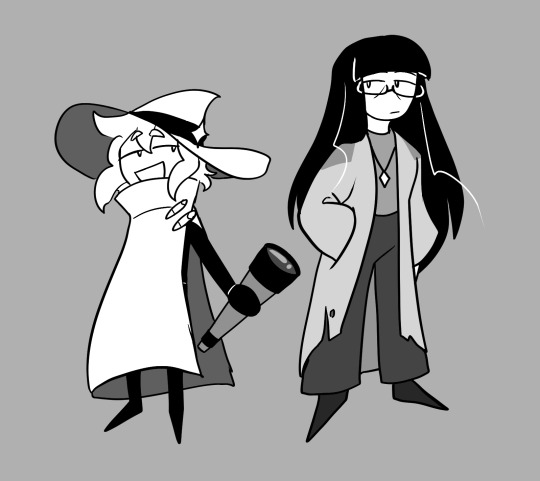

A scenario in which the island isn't forgotten but ka bue is
#hey whats worse?#if ka bue being forgotten is more recent#meaning odile lost a lot of her life#or if its been forgotten for a while#meaning shes been traveling alone for a long time#i think towards the beginning of her journey she got her coat tailored to have huge pockets#she keeps her life in there#forgotten ka bue#isat spoilers#in stars and time#isat#my art#in stars and time spoilers#in stars and time fanart#isat odile#isat siffrin#isat fanart#i tried to make siffrin look just a lil more confident lol#isat au
1K notes
·
View notes
Text




i did not feel like lining all of that so y’all are just gonna have to take this
prev | next
#rottmnt#riseofthetmnt#kikis art#rise of the teenage mutant ninja turtles#illustration#kikisramblingagain#donatello#rottmnt donatello#rottmnt donnie#rise donatello#rise donnie#raphael#rottmnt raphael#rottmnt raph#rise raphael#rise raph#comic art#lost but not forgotten#digital art#digital illustration#save rottmnt#unpause rottmnt
214 notes
·
View notes
Text


Rotten
#nature#naturecore#witchyvibes#rural#lost places#gothic#forest#forest spirit#swamp witch#goblincore#animal skull#dog skull#skull#nature aesthetic#mossy woods#witchcore#winter forest#weirdcore#dark forest#forest stream#frost#freezing#nostalgia core#decaycore#forestcore#fantasy forest#forgotten places#almost nowhere#nature photography#photographers on tumblr
828 notes
·
View notes
Text
Lost, but Not Forgotten: The Dancer of the Nile (1923)
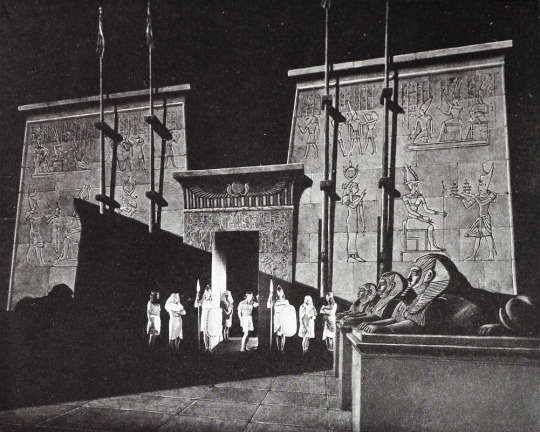

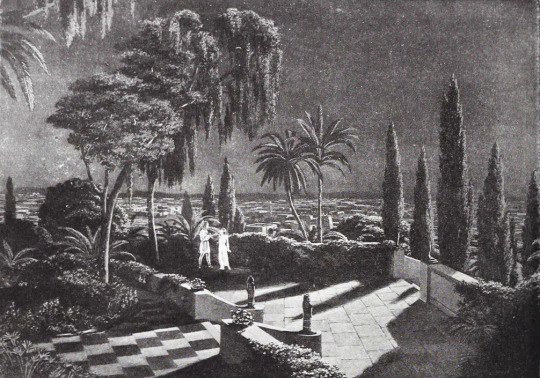
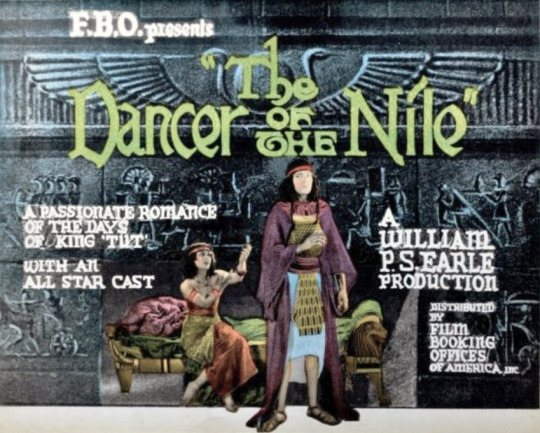


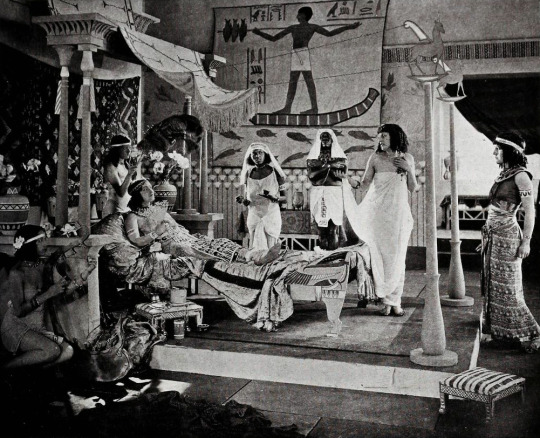
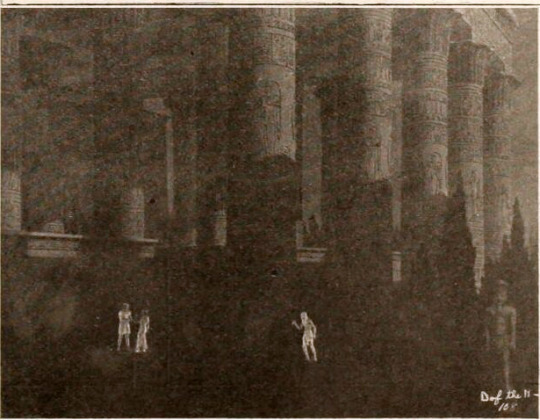

Alternate Titles: Tut-ankh-amen, Tutankhamen of Luxor
Direction: William P.S. Earle
Scenario: William P.S. Earle
Original Story: Blanche Taylor Earle
Production Manager: Dick L’Estrange
Camera: Jules Cronjager & Joe Goodrich (assistant)
Scenic Artist: Xavier Mochado
Set Designer: Paul Dodge
Technical Advisor: Capt. Dudley S. Corlette
Studio: William P.S. Earle Pictures Corporation (Production) & Film Booking Offices of America (F.B.O.) (Distribution)
Performers: Carmel Myers, Bertram Thomas Grassby, Malcolm McGregor, Anthony Merlo, Sam de Grasse, Iris Ashton, June Elvidge, Paul Weigel, Howard Gaye, Mother/Nellie Anderson, Beatrice Marsh, & Earle Marsh
Premiere: 12 October 1923, Loew’s New York, New York, NY
Status: presumed entirely lost
Length: 6 reels, 5,787 feet
Synopsis (synthesized from magazine summaries of the plot):
Princess Ankhnespaton [sic] (June Elvidge), daughter of King Akhnaton [sic] (Howard Gaye), has a run in with a band of thieves while traveling. Prince Karmit (Malcolm McGregor) of Syria arrives, disguised as a merchant, and saves the princess. The princess becomes enamored with Karmit and invites him back to the royal residence in Thebes.
While visiting the royal gardens, Karmit encounters a dancer, Arvia (Carmel Myers). He is instantly smitten. The princess is furious that Karmit has rebuffed her for a mere dancer.
Meanwhile, tension between those loyal to the king and those loyal to the old gods erupt when the seasonal flooding of the Nile river doesn’t occur. The princess finds in this situation an opportunity to get her revenge on Arvia.
The princess decrees that Arvia will be offered as a human sacrifice to the god Sobek, in order that the Nile will rise as expected. Arvia is adorned with a poisoned amulet to knock her out while she is fed to the crocodiles.
In an unexpected turn of events, the high priest Pasheri (Sam De Grasse) discovers that the intended sacrifice is his own daughter. Pasheri sneaks into the chamber where Arvia is to be sacrificed and saves her at the last moment.
With Pasheri’s aid, Karmit whisks Arvia away. As the Nile rises, the new couple sail away to Karmit’s kingdom to live happily ever after.
The princess goes on to marry Prince Tutankhamen (Bertram Grassby). And, after the death of her father Prince Tut will become King Tut.
Additional sequence(s) featured in the film (but I’m not sure where they fit in the continuity):
The Temple of Amun-Re is also depicted in the film.
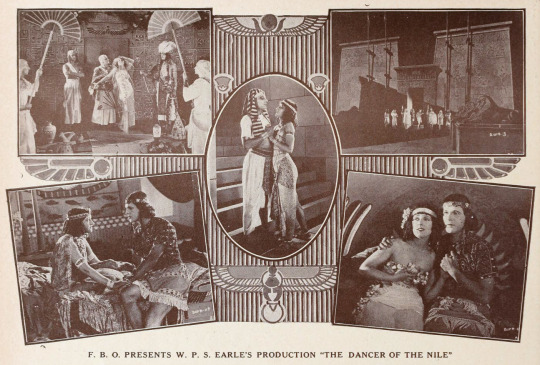
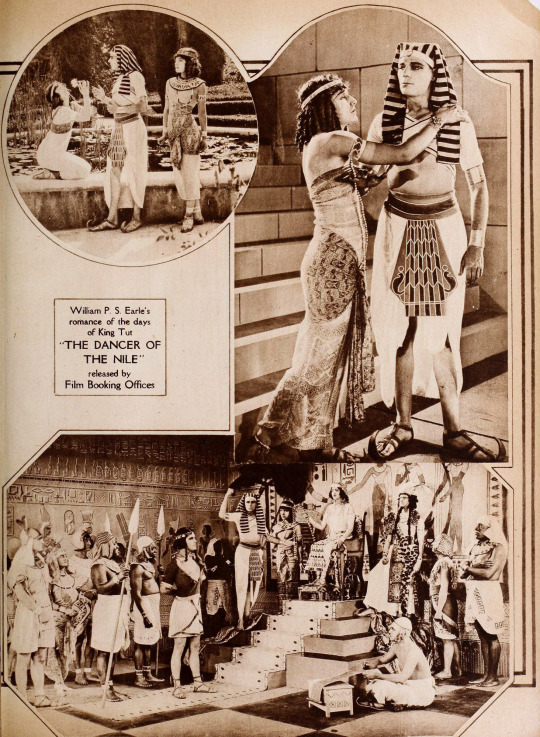

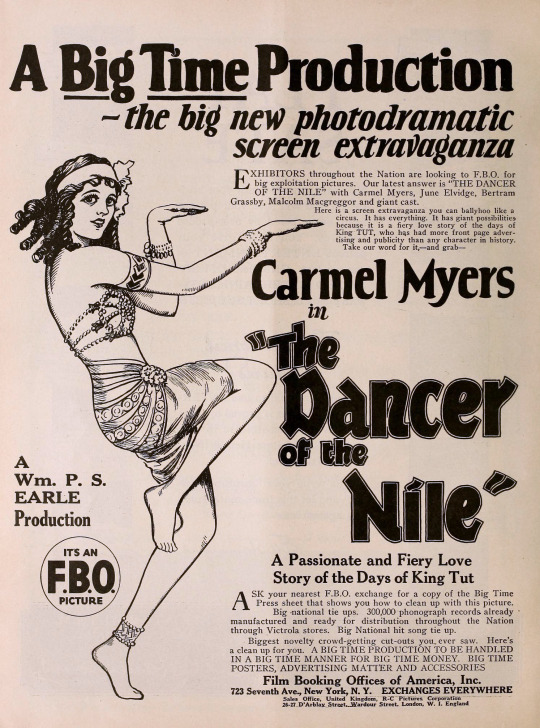
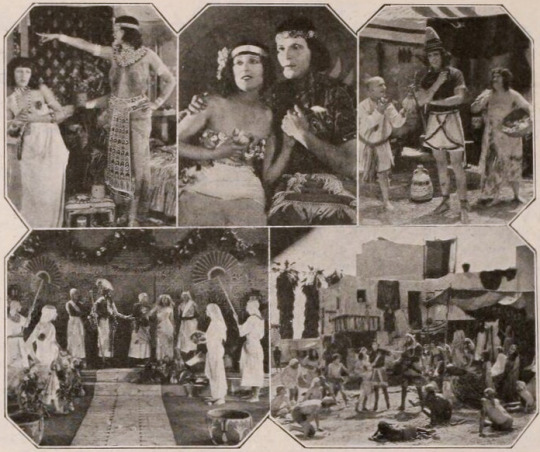

Points of Interest:
While many contemporary reviewers of The Dancer of the Nile (DotN) didn’t mark it as an especially good film, props were given for the artistic effects achieved by Director Earle. Earle and his brother, Ferdinand Pinney Earle, were both pioneers of the era in special effects.
Ferdinand was a painter who contributed matte paintings and art titles to many films of the 1910s and 1920s. While William was primarily a director, both brothers ambitiously created films that were on the cutting edge in regard to techniques of incorporating matte paintings with live actors/studio-shot footage.
For William, it was DotN, and for Ferdinand it was A Lover’s Oath (1920/1925, presumed lost save for a few fragments), which was an adaptation of Omar Khayyam’s Rubaiyat. (ATM, I’m planning on doing the next installment of this series on this film!)
(Explanatory note: One technique at use here involves double exposure. Part of the frame is obscured while filming, leaving the obscured part of the film unexposed. The film is then rewound, with the exposed part of the film obscured, to film another element. The final result is, hopefully, a cohesive sequence.
Another technique is shooting through painted glass, which, if painted and lit correctly, results in the painting and the scene occurring behind it appearing as a singular space.
For example, a fully painted environment with live actors moving across the scene. In DotN, there is at least one scene where a live actress ascends a set of stairs, which is a painting. These techniques require an amazing amount of precision, but when done right they can be really dazzling. The double-exposure matting technique has persisted through most of film history, albeit rarely at the scale the Earle brothers were using it!
Below is an illustration of how a moving version of matte photography works from a 1926 issue of Photoplay, followed by some stills from DotN that used the multiple-exposure technique.





I have a few posts coming up that go into more detail on how special effects were executed in films of the 1920s!)
William P.S. Earle’s focus on the artistic elements without much regard for story or characterization may have left many critics cold, but DotN did prove to be a lasting attraction, running in theatres around the world for years following its release. DotN was produced hot on the heels of the discovery of Tutankhamen’s tomb in 1922 in Luxor, which launched a new wave of Egyptomania. On one hand, Earle was cashing in on a trend, but on the other, he took the opportunity offered by assured profitability to experiment. In addition to the special effects discussed above, Earle attempted to capture as much period accuracy as possible in the painted settings, props, and costumes. Balancing historical accuracy with perceived “authenticity” in period art is exceedingly difficult—Earle seemingly had mixed success. However, one contemporary review in the magazine Art and Archaeology by Dudley S. Corlett (also the film’s technical advisor) is highly complementary of DotN’s attention to historical and artistic detail. [You can find the review in the transcription section!]
After Earle had more or less finished DotN, F.B.O. bought “Tut-ankh-amen” for distribution. F.B.O. financed reshoots that shifted the narrative away from Tut and towards Arvia, the dancer—hence the title change. I guess F.B.O. believed that cashing in on the trend of movies about dancers would be more lucrative than cashing in on Tut-mania!
☕Appreciate my work? Buy me a coffee! ☕
---
Transcribed Sources & Annotations over on the WMM Blog!
#1920s#1923#lost film#Lost but not forgotten#Dancer of the Nile#tutankhamun#classic film#classic movies#film#silent film#american film#silent movies#silent cinema#silent era#egyptomania#film history#history#William P.S. Earle#movies#Blanche Taylor Earle#Carmel Myers
47 notes
·
View notes
Text

Lost but Not Forgotten
With the start of the actual Anniversary month, the old Anniversary quests are back in game. As I am still missing some, I looked into those and found this gem: Lost but Not Forgotten is from the 19th Anniversary and was desiged as a super hard mission for two groups (12 player/mercs). Some time has passed, so I thought I give it a try with my scooby gang and the game let me in with just 3 characters + 3 mercs.
The mission happens in the lovely dungeon Mistmoore's Chambers of Eternal Affliction from the good old LDoN expansion - with mobs beefed up to level 115. While those mobs are thankfully green/lighblue to me by now, the setting is challenging. Packed rooms, traps and tricky named mobs with variety of skills make me work for my (virtual) money.
I am actually giving up my first try to beat this. I guess the whole dungeon will take me 4 or 5 hours to get through (time limit is 6 hours). But now it's Monday 1:30 am and I only got like 1/3 in.

Better start earlier next time 😸
0 notes
Text
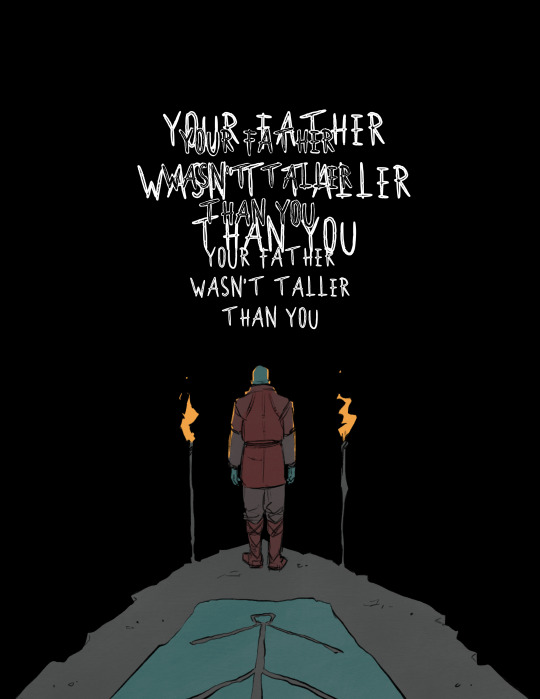
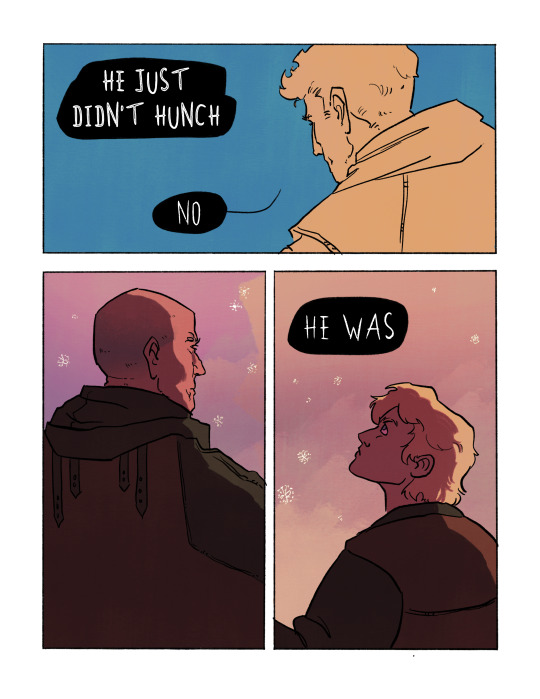
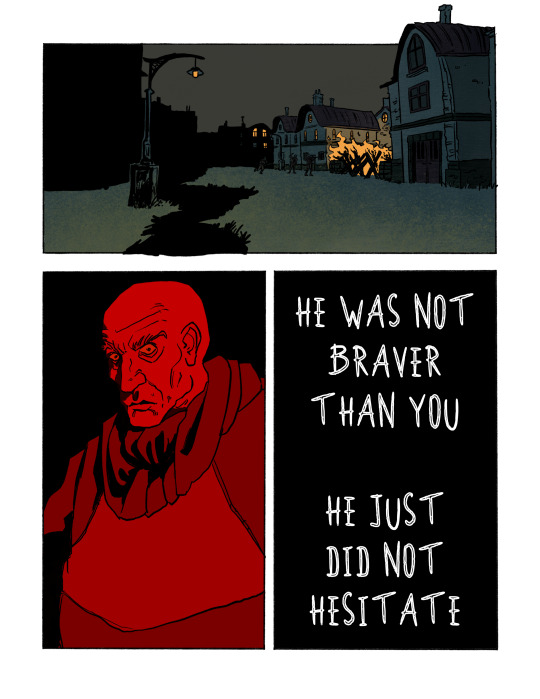
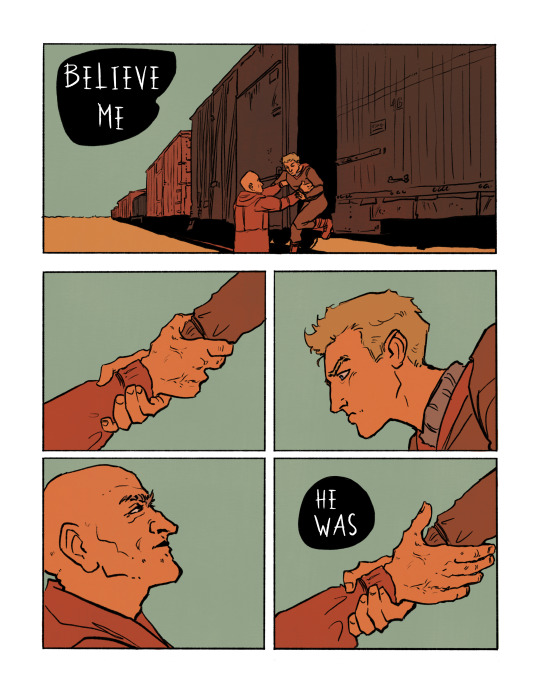


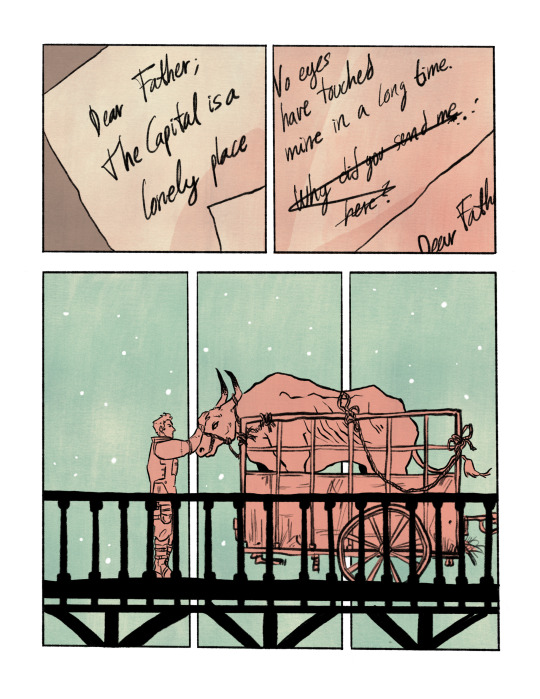

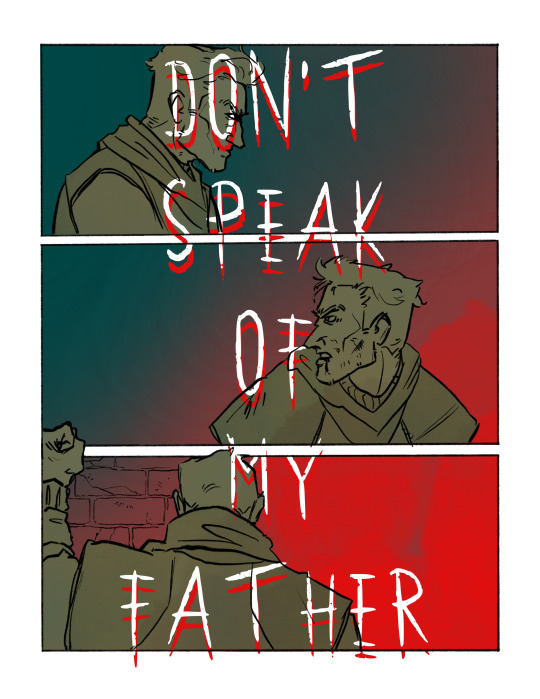

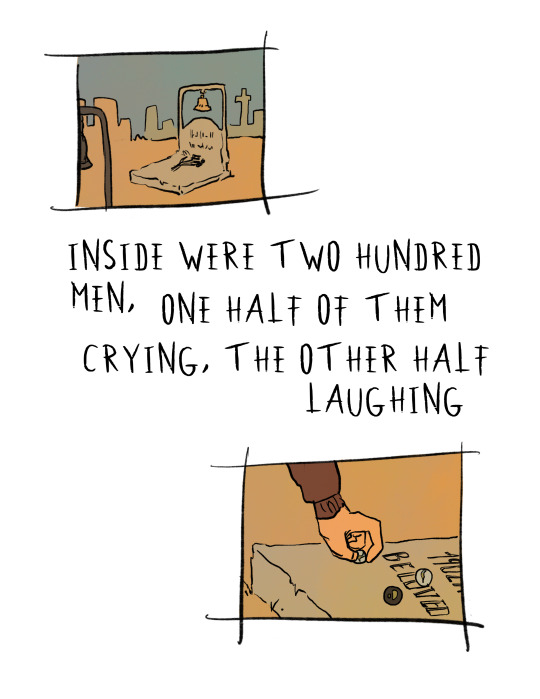
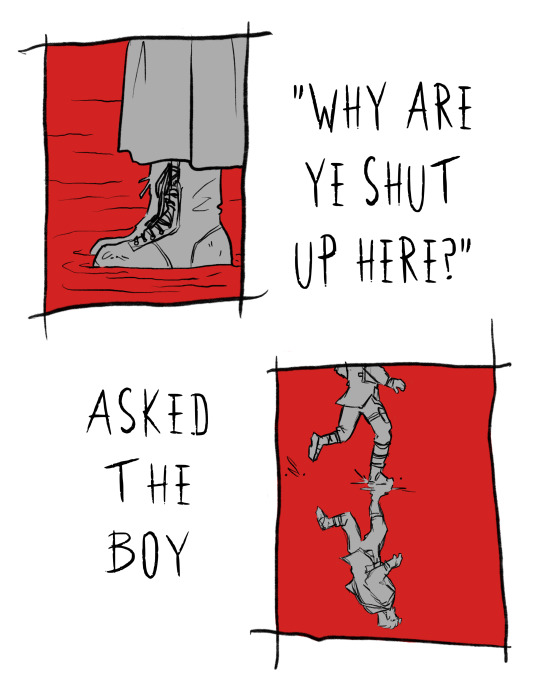




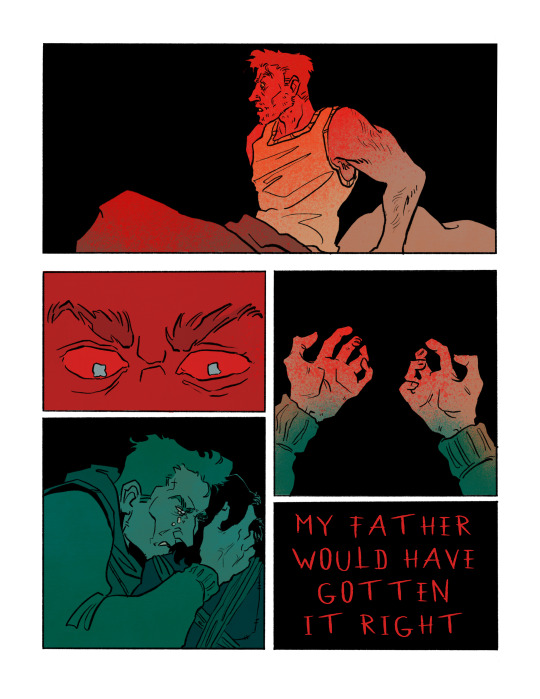
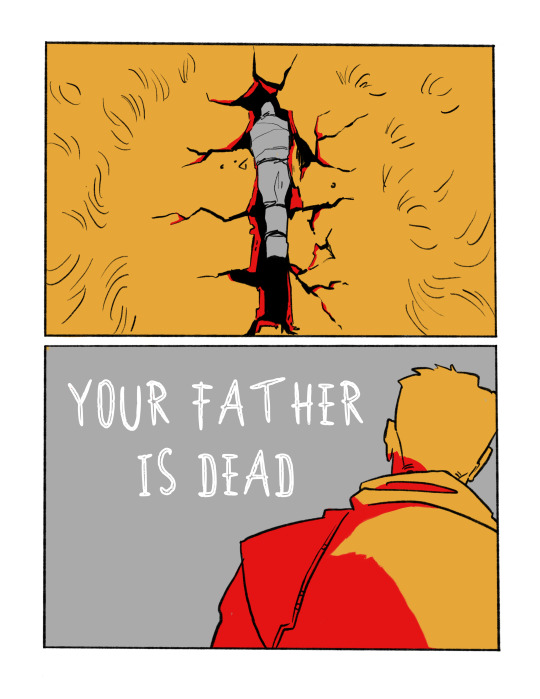

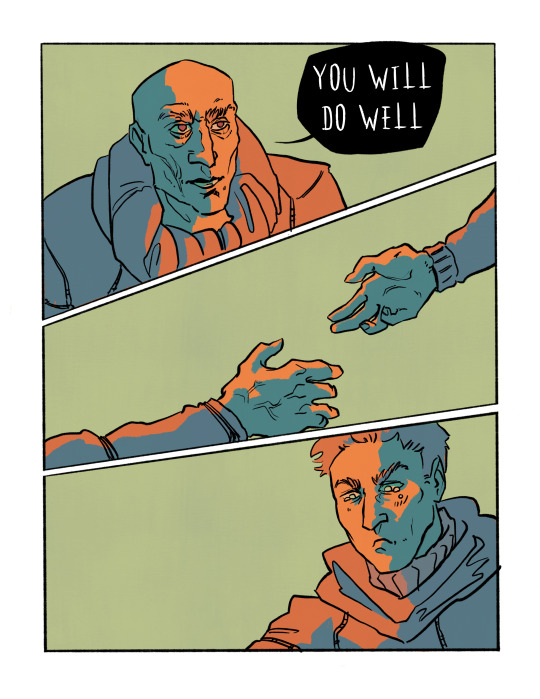

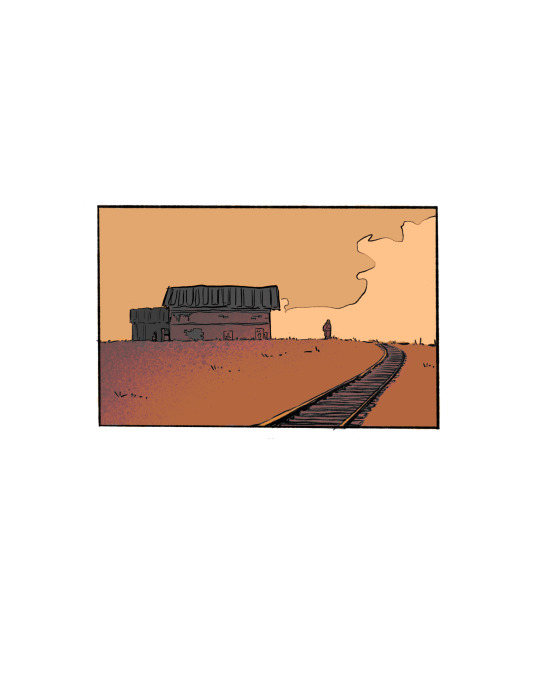
YOUR FATHER || A PATHOLOGIC FAN COMIC
#artemy having a bad time don't we love artemy having a bad time#i lost murky on my first playthrough because dawn of day 7 caught me on the way there through the steppe#and i have never forgotten that feeling#pathologic#artemy burakh#pathologic fanart#the haruspex#comics#pathologic comic#i wrote and drew this in two days#hopefully will never do that again
5K notes
·
View notes
Text

Coming this Saturday... 😗👐
537 notes
·
View notes
Text




All the girls are girling
Also i hastily put together a map to keep track of everyone’s locations
#my art#tf science cont#tf#transformers#maccadam#tf lifeline#tf quickslinger#oh boy more bug imagery !#edit: lifeline and quickslinger are canon tf characters just long lost and forgotten </3
842 notes
·
View notes